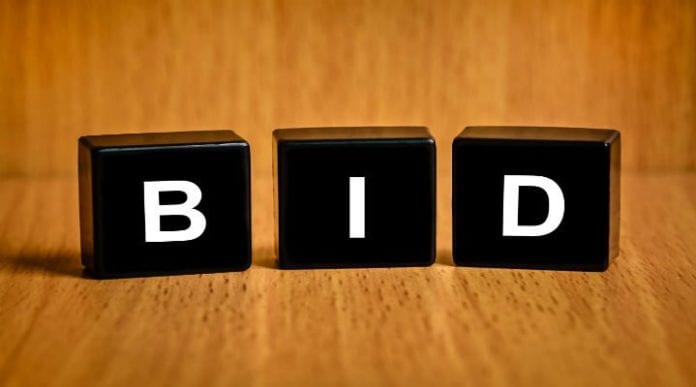After 55 rounds of bidding, the Federal Communications Commission’s auction of midband satellite spectrum has raised about $78.5 billion in bids.
Prices are slowly settling for most of the licenses on offer, with demand equalling the supply of licenses for 305 of the license products and demand outstripping supply for 147 license products as of the 55th round.
The auction’s total raised has far exceeded estimates and has brought in more gross bids than other other Federal Communications Commission auction. Comparatively, the previous largest auction was the AWS-3 auction that ran in 2014-2015 and raised nearly $45 billion.
Five rounds of bidding are being held daily, with a field of 57 qualified bidders. Prices in most of the large markets appear to have settled, and license demand is shifting to smaller markets. The Partial Economic Areas with the highest levels of demand as of Round 55 were Bangor, ME; Cedar Rapids, IA; Goldsboro, NC; and West Plains, MO.
The 3.7 GHz service is divided into 5,684 licenses, or 14 sub-blocks in each of 406 available Partial Economic Areas across the United States. The A block consists of 100 megahertz (five 20-megahertz sub-blocks) from 3.7-3.8 GHz; that spectrum will be the first to be cleared, with a deadline of December 2021. The B block consists of 100 megahertz (five 20-megahertz sub-blocks) from 3.8-3.9 GHz) and the C block makes up the final 80 megahertz with four 20-megahertz sub-blocks; that spectrum is slated to be cleared by December 2023. (There is also a 20-megahertz guard band at 3.98-4.0 GHz; satellite operators will move their operations into the top 200 megahertz of the band from 4.0-4.2 GHz.)
In the largest PEAs, the licenses are being bid upon separately as A-blocks and BC-blocks. In the rest of the remaining 360 PEAs, the licenses are being bid upon as a single (ABC) category. The A-block’s prices reflect the additional desirability that comes with more rapid availability and those licenses tend to have a premium price compared for more than the corresponding BC blocks — but not always. In NYC, for instance, A block licenses have landed at a price of about $515 million each, but BC block licenses are at nearly $515.2 million. In Los Angeles, the A block has a significant price difference: $554.2 million compared to $504 million for BC licenses.
On an average price per megahertz-POP basis across blocks, the most expensive market as of Round 55 was Milwaukee, WI, which broke the $2 mark for a price of ($2.09 per MHz/POP). Milwaukee was followed by Brownsville, TX ($1.79 per MHz/POP); San Diego, CA ($1.77 per MHz/POP); and Oklahoma City, OK ($1.77 per MHz/POP) and Indianapolis, IN ($1.72 per MHz/POP), according to analysis by Sasha Javid, COO of BitPath and formerly lead of the Federal Communications Commission’s auction team.
The C Band spectrum will provide an injection of highly desired midband spectrum for 5G deployment in the U.S., with greater available capacity than other sub-6 GHz airwaves and better propagation characteristics than millimeter wave.

